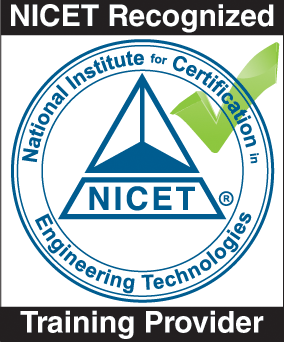Class 2 - NEW 2022 Code updates for 2-Way ECS and ERCCS
GENERAL INFORMATION
Notes: |
|
CONTINUED EDUCATION / ACCREDICATION
ICC Course No 19707
For information please click  HERE.
HERE.
Approved for 8 Hrs - 0.8 ICC-CEUs

CLASS DESCRIPTION
The NEW specific code requirements for the design, installation and performance of these Two-Way Emergency Communication Systems (ECS) and ERCCS are specified in NFPA 72-2022 and NFPA 1221-2019 and NFPA 1225-2022 which will become effective in CA. on 1/1/2023.
Reliable communication between first responders (Police, Medical and Fire) during emergency events is essential to provide better management and control of the event. For many years, these systems were based on wired technology such as phone-jacks and emergency (Fire Wardens) phones; however, based on first responders' feedback, it was determined that they prefer to use their personal portable radios for communication during emergency events. Emergency Responders Radio Coverage Systems (ERRCS) were first required by the 2009 IFC and associated NFPA standards 2009 NFPA-5000 and the 2010 NFPA-72. This course will discuss and clarify current IBC/CBC and IFC/CFC codes and specific NFPA installation and performance requirements from the perspective of System designers, installers, and enforcing agencies/AHJ.
This class will focus on the NEW 2022 Code requirements for in-buildings Two-Way Emergency Communications Systems (ECS) in NFPA 72-2022 and NFPA 1221-2019 and NFPA 1225-2022. NFPA 72 Section 24.10 was completely revised in the 2019 Edition and charged again in the 2022 edition : The following ECS were combined under this Section: Area Of Refuge (AOR), Stairway, Elevator Landing, and Occupant Evacuation Elevator Lobby. Other Two-Way ECS were removed and relocated to the Annex (Elevator ECS) and other sections were rearranged (Section 24.11 and 24.12). CBC-2022 also includes specific CA requirements for locked elevator lobbies Access Control and specific associated ECS. NFPA 1221-2019 (Specific Sections) is the current national applicable code for ERCCS in CA effective 1/1/2023 and it includes new requirements for all ERCCS system components monitoring, supervision, survivability, etc. Specific Pathway Survivability Levels requirements for conduits, cables, wiring per NFPA 72 Chapter 12, NFPA 1221 and NFPA 1225 and Examples from actual designs will be presented and discussed in this Class.
NEW UL Standards are provided for 2-Way ECS (UL 2525) and for ERRCS (UL 2524) - These equipment standards will be required by the NEW IBC and IFC to be applied for all 2-Way ECS and ERCCS effective 1/1/2023- This class will clarify and discuss the listing requirements for these systems and how AHJs can approve systems without specific listings.
New requirement in NFPA 1225 will require all elevator cars to be considered as Critical Areas with 99% Radio Coverage. This class will discuss and clarify how elevator hoistways may be used to run Leaky Coaxial Cables to comply with this requirement per the new Elevator Code A17.1-2022.
Specific ADA Requirements applied for 2-Way ECS based on IBC and ADA standards including specific CA requirements for locked elevator lobbies in existing High-Rise buildings. These requirements will be discussed and clarified.
Retroactive requirements for Radio Coverage and Fire Department Communications are included in Chapter 11 of IFC and CFC - Retroactive requirements for existing buildings will be discussed and clarified.
LEARNING OBJECTIVES/OUTCOMES
- After attending this session participants should be able to define and understand the differences between One-Way and Two-Way Emergency Communications Systems.
- Identify the various types of Two-Way Emergency Communications Systems included in NFPA 72 Chapter 24 and determine in which buildings these systems are required based on the IBC and CBC/CFC.
- Define and understand ECS and ERRCS associated code terms such as Pathway Survivability Levels, Voice Intelligibility, and System Supervision.
- Understand and learn how to apply specific NFPA 72-2022 Chapters 12 and 24 installation and performance requirements to new ECS projects, based on enforcement agencies/AHJ's requirements.
- Understand the specific IFC/IBC requirements for Emergency Responders Communication Coverage (ERCC) versus Emergency Responders Communication Coverage Systems (ERCCS) in various types of existing and new buildings.
- Discuss new Supervision and Monitoring requirements for ERRCS per NFPA 1221-2019 and NFPA 1225-2022: Standard for the Installation, Maintenance, and Use of Emergency Services Communications Systems.
TARGET AUDIENCE
- Fire Alarm, 2-Way ECS, and Electrical Personnel: Designers, Installers, Technicians, Service personnel, Vendors, Engineers.
- Radio and FCC licensed (GROL) Personnel: Designers, Installers, Technicians, Service personnel, Vendors, Engineers.
- Authority Having Jurisdiction (AHJ) and Code Officials Personnel: Fire, Building, Electrical Inspectors, Code Enforcers and Permit Plans Reviewers.
- Building Personnel: Owners, Managers, Building Engineers, Property managers.
- Professionals: Architects, Electrical and Fire Protection Engineers.
- Fire Service Personnel: Firefighters, Fire Plan Review Inspectors, Fire Field Inspectors.
CLASS OUTLINE
TWO 4-Hour sessions via LIve Zoom Training | ||||||||||||
Session #1, Thursday, September 15, 2022 (starts at 8:30 for verifying the Zoom connection and technical issues) | ||||||||||||
| ||||||||||||
Total - 4 Hour session Session #2 Friday, September 16, 2022 (starts at 8:30 to verifying the Zoom connection and technical issues) | ||||||||||||
|
KEYWORDS ASSOCIATED WITH THE CLASS
Two-Way Emergency Communications System, One-Way Communications System, Emergency Communication System (ECS), Radio Enhancement System, Public Safety Communication System, Emergency Voice Alarm Communication System (EVACS), Phone-Jack System, Levels 0, 1, 2 or 3 Pathway Survivability, System and Floor Antenna supervision, Area-Of-Refuge Communication System, Elevator-Landing Two-Way Communication System, Stairway Communication System, Emergency Responders Radio Coverage (ERRC), Emergency Responders Radio Coverage System (ERRCS), DAS, BDA System, Radio Repeater System.
CLASS ASSOCIATED CODES AND STANDARDS
- NFPA 72 - 2022 Edition
- NFPA 1221-2016, 2019 and NFPA 1225-2022 Editions
- IBC- 2021 Edition
- IFC- 2021 Edition
- CBC- 2022 Edition
- CFC- 2022 Edition
- UL 2524
- UL 2525



